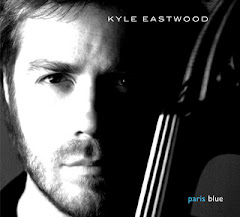Over the years, I've purchased a bunch of CD’s on Amazon,
including a few box sets and such from Tony Bennett. Right around the time we
bought tickets to see Tony Bennett in concert in Nashville this December,
Amazon started flashing me with a Tony Bennett Lady Gaga duets album pop-up. It
was relentless. They really wanted me to pre-order this record, but, having
never listened to Lady Gaga and not being all the enamored of a young woman who
never shows her own face and wears meat dresses, I told myself that no matter
how much I liked Tony Bennett, his recording with Lady G was one I was going to
pass on.
Still the popups came. It didn't matter if I was shopping
for books, music, salt shakers, saxophone reeds, cheesecloth, pineapple corers,
sheet music, silver polish, a hand ax, Roomba parts, super glue, or protein
powder. As sure as I was going to check the box for “checkout”, Tony and Lady
were going to bounce up to tell me, “Eric, new for you!” It wasn't new. And
frankly, an 88-year old guy with makeup by himself is not disconcerting, and a
28-year old pop star with a curly black wig and makeup is not disturbing, but
together, staring at you, calling you by name, it is disconcerting, disturbing,
and downright scary. For months, this went on, but as the sale date of the
recording approached, Amazon figured they had given it their best shot, and
eventually, the popups stopped.
Then came a Wall Street Journal article about the recording,
together with an interview with Lady Gaga. It talked about how it came to be
that Lady Gaga sings jazz, not only with Tony Bennett, but also that she wants
to release at least one solo jazz album every year “forever”. It talked about
the odd pairing of the two, how Tony ended up wearing different performance
outfits, and how Lady Gaga was able to tap into some previously unheard part of
herself, thanks entirely to Tony Bennett’s encouragement. Suddenly, everything
made sense. I shared the article with Mrs. S who just asked, “So, are you going
to buy the CD?” Of course, the answer was ‘yes’. I pre-ordered the CD. Amazon
knew exactly what I wanted before I even knew I wanted it. In fact, they knew I
wanted it, before I even really understood what it was. Some would say that is
scarier than the faces on the popups. I, however, am oddly relieved to know a
company can generate a computer program that knows me and my intentions better
than I do. I’m almost happy about it. No, I AM happy about it!
From now on, if I have any question about anything in my
life, I think I will just ask Amazon.






